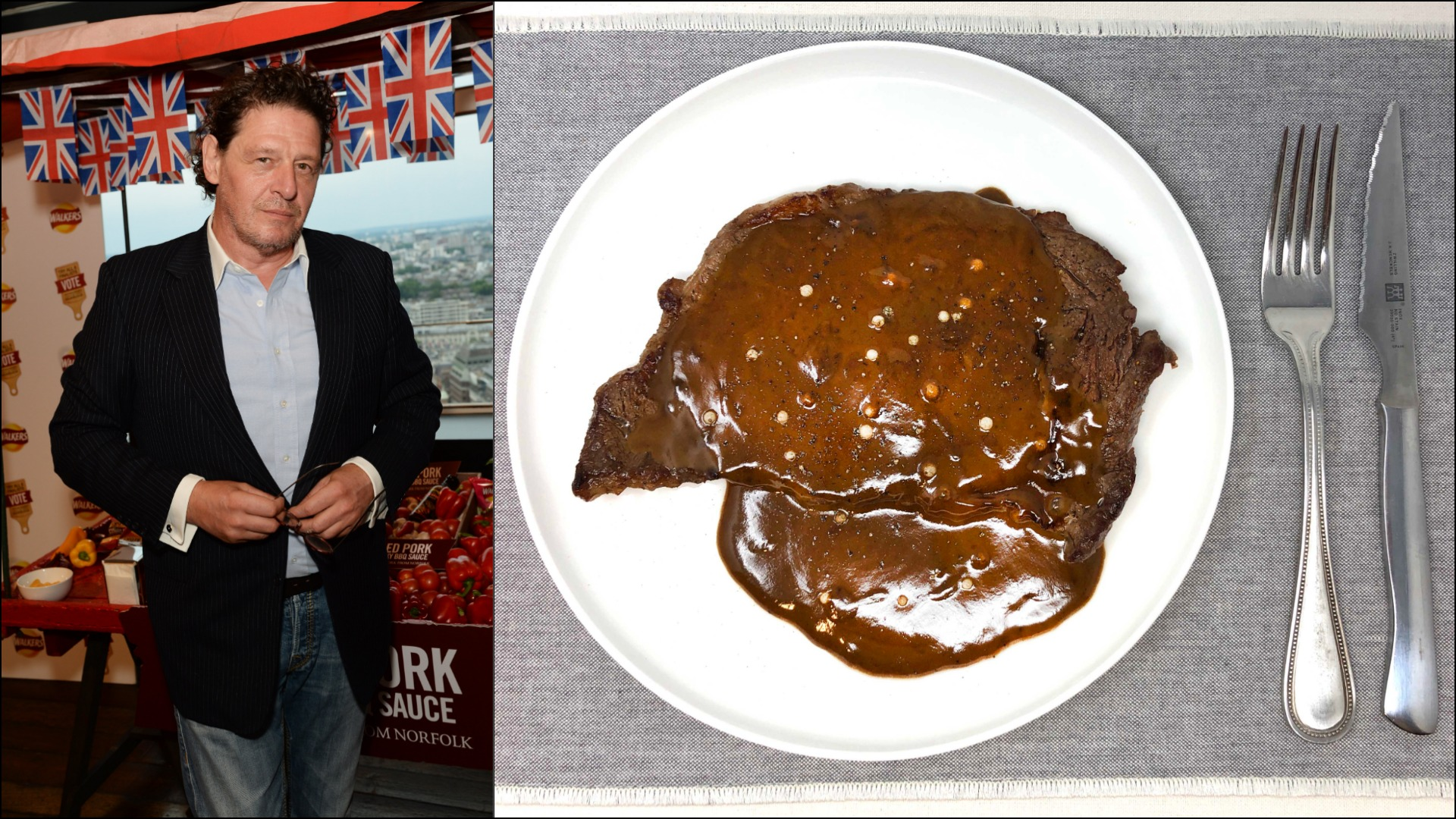A Steak Au Poivre Recipe Too Good To Be True?
Marco Pierre White, if you've never heard the name, was the O.G. bad-boy British chef, a man who infamously broke a young Gordon Ramsay and reduced him to tears. Like Ramsay, White has a reputation for a fiery demeanor, but is also known as one of England's greatest chefs: In 1994, White was the first British chef to earn three Michelin stars, a feat Ramsay himself would garner in 2001.
White has retired from cooking in restaurants, and now mostly appears on television as a food personality and as a brand ambassador for British food companies. Recently I came across one of White's cooking videos on YouTube for steak au poivre, the classic French bistro dish of peppered steak. Halfway through the video, I realized it was an ad for chicken bouillon cubes:
Despite its not-so-subtle product placement, I was intrigued by how chicken bouillon cubes were integrated into a steak recipe. Rather than seasoning the beef with salt and pepper, White crumbled bouillon cubes, mixed in olive oil, and spackled the steak with this savory paste. It sounded strange on first blush, but the more I thought about this, it was exactly the way I might throw together a meal at home.
Making White's steak au poivre was disarmingly simple. It seemed too good to be true, but dang it, it worked. The bouillon seasoning-pasted steaks were quickly seared, a pan sauce was thrown together with three ingredients, and dinner for two was plated in under 10 minutes. What's most interesting about this video was that it's a fascinating insight into a chef who cooked not with strict recipes, but on intuition. "Why can't it just be feel?" White said at one point. When he added heavy cream into the pan of Worcestershire sauce, his instructions were: "When I like the color of it, that's when it's ready." This should be the way we all cook. We should constantly taste while cooking, and tweak accordingly. Assuming we have some acumen in the kitchen, exact recipes could often be eschewed for gut and eyeball.

This wasn't the be-all-end-all way of preparing steak, but it was incredibly satisfying to cook. I'll summarize White's method and add a few suggestions of my own: Buy the thinnest-cut ribeyes you can find. For the seasoning, I used bouillon powder rather than cubes, which made the marinade slightly less messy to put together. I also used beef bouillon instead of chicken, just to amplify the beefiness in the final dish.
When you're searing, I'd suggest a cast-iron skillet or stainless steel pan. Because my steaks were so thin and I wanted good browning, I cooked it on high heat with canola oil (butter burns too easily) for two minutes on each side. I avoided fidgeting with the beef so it could achieve maximum color without it overcooking.
After two minutes a side, I removed the steaks onto a plate (it'll keep cooking as it rests). I poured out the oil and added a lot of Worcestershire sauce to the hot pan, and turned the heat down to medium. After the Worcestershire sauce bubbled and reduced, I added heavy cream and green peppercorns (you'll find green peppercorns brined and jarred). Like White said: "When I like the color of it, that's when it's ready." I added the steaks back into the pan, drenched it with sauce, plated it, cracked lots of black pepper, and began eating immediately.
